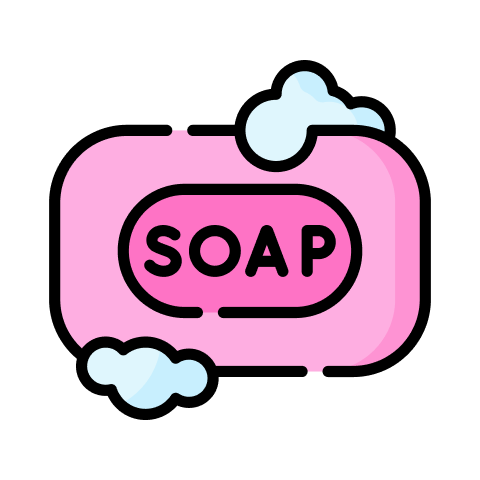The Hospice Team will usually do the bathing during the regularly scheduled visits.
- What Supplies Do I Need for a Bed Bath?
- How to Give a Bed Bath: Step by Step
- When Possible, Encourage Participation
What Supplies Do I Need for a Bed Bath?
Towels
Towels will be used to dry, cover the body for privacy, and act as a barrier for bedding during the bedbath.
Washcloths
Try to have one washcloth for the face/neck, one for the body, and one for the groin area.
Basin for water
One basin is fine, but when the water becomes visibly dirty or too soapy, you should replace it withfresh water.
How to Give a Bed Bath: Step by Step
Wash your hands, put on gloves, and explain the procedure to your loved one, speaking slowly andclearly so they know what to expect.
Make sure doors are closed and shades are drawn to provide privacy. If they are in a hospital bed,adjust it to waist level for your comfort.
Place a towel (or small blanket, if desired) over their body for privacy and assist them as needed inundressing beneath it. Fill the basin with warm water and test the temperature with their wrist.
Uncover one body part at a time, and place a towel under the body part being washed. Wash, rinse, anddry one body part at a time. Do this to ensure privacy/dignity, as well as to prevent them from gettingcold.
Wash your loved one in this order:
- Eyes/face/ears/neck: Wash face with warm water only, using a clean part of the wash cloth foreach eye, and wash from the middle outward.
- Arms/hands/chest/abdomen: Remove one arm at a time from under the towel and place a drytowel underneath. Wash with a warm soapy washcloth using long strokes from top to bottom;rinse and dry. Wash the chest then the abdomen in a similar fashion.
- Legs/feet: Remove each leg one at a time from under the towel and place the towel underneath.Wash with a warm soapy washcloth using long strokes from top to bottom; rinse and dry. Besure to rinse and especially dry thoroughly between toes.
- Back: Gently assist your loved one in rolling onto their side, place a towel lengthwise next to theback. Wash the back of the neck, back, and buttocks with long downward strokes. Rinse and dry.
- Perineal and genital area: Assist them in rolling onto their back once more. Place a towel underthe buttocks and thighs. Always change basin water before washing this area. For females, usevery little soap to prevent a UTI (Urinary Tract Infections). Using a clean part of the newwashcloth each time, work front to back using single strokes. Rinse and then pat dry.
After the bath is complete, consider applying a fragrance and dye-free lotion to prevent skin dryness,which can lead to minute skin tears and infection. Take this time to also clean under and if neededconsider clippimg fingernails, as well as inspecting their toenails.
When Possible, Encourage Participation
Encourage your loved one to participate in washing, if they are able. This will not only help with maintaining range of motion, flexibility, and functional stamina, but it will also give an element of control to the task. The above is a thorough, step-by-step guide for an entire bed bath provided by you,the caregiver, in cases where your loved one is unable to participate.
Always follow the above instructions, but you can urge your loved one to do as much of the washing as possible, with you as their guide. They may sit at the edge of the bed (if safe to do so) for steps 1 and 2 if desired.
Here are a few common issues with bed baths and how to address them:
Getting the bed wet: This can be a problem if not careful in how the bath is given. Using towelsplaced under each body part as instructed above, as well as wringing out the washcloth andmaking sure it is not dripping wet, will usually prevent this issue.
Getting cold: To prevent this, you should wash, rinse, and dry one body part at a time, placing itback under the privacy towel. Additionally, change the water as often as needed to make surethe water doesn’t get too cold. If you know they get cold easily, consider using a warmer blanketas opposed to a towel for privacy.
Avoidance of bathing: It’s very common for older adults to refuse bathing altogether. There area few explanations for this, including a loss of vision, dulled sense of smell, and memory loss.Gentle reminders or creating a bath schedule can help. Alternatively, loss of function andcontrol over their lives can lead to depression, which in turn can lead to loss of interest inpersonal hygiene. If you suspect your loved one is depressed, you should discuss with thehospice team.











